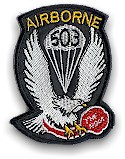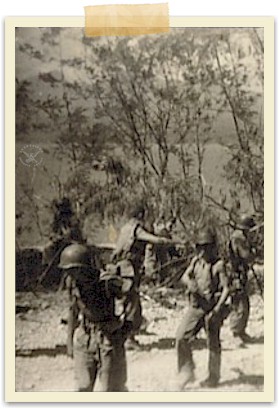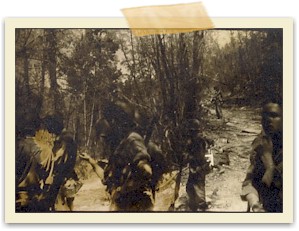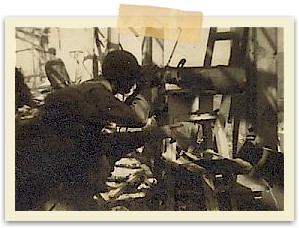|
- 4 -
The
3d platoon was deployed along north side of the flat-topped hill where Battery
Cheney stood and then extended east along the north wall of the battery's gun
port. The entire platoon was
positioned above the steep, nearly vertical walls that dropped sharply into the
deep ravine or on to the beaches below the western cliffs.
The position could have been held by a corporal's guard against a field
army, since the attacking force would have had to scale a very steep cliff to
reach the 3d platoon, which would have been looking down their enemies' throats
all the way. Instead an entire rifle platoon was used in this virtually
unassailable position, probably for no other reason than they had ended up there
when they assaulted Battery Cheney earlier in the afternoon and there was no
time to move them. The 3d platoon would be out of the fight that night.
The
real danger was the Cheney Ravine corridor, but that critical attack route got
little attention and, as a result, was lightly defended, as we shall see.
The 2d platoon had two squads deployed to the rear of Battery Cheney,
roughly parallel to and above Cheney Trail.
Their third squad was deployed on a line that was roughly parallel to and
east of Cheney Trail running south until it met the left flank squad of the 1st
platoon, which had also deployed 30 or 40 yards east of and roughly parallel to
Cheney trail where it crossed in front of company headquarters at Wheeler Point. The two rifle squads from the 1st and 2d platoons along the
trail fought the entire night suffering heavy casualties but the four remaining
squads were out of the fight. The
19-man mortar platoon had two 60mm mortars, with about 30 rounds of ammunition,
sited in a large bomb crater that once had been a 40 foot stretch of Cheney
Trail. The 4th platoon position was
40 or 50 yards behind the 1st and 2d platoon's two rifle squads and 30 yards in
front of the company headquarters' bunker.
They had not, however, registered their weapons on any targets to support
the company defenses. The mortar men were positioned astride Cheney Trail and
the entire platoon fought in the battle throughout that long pitch black night.
The
force blocking Cheney Ravine was too far to the south and not deployed in
sufficient strength to defend the most logical attack route that must have been
apparent at the time. Why hadn't
they planned artillery and mortar concentrations to be delivered on request?
It wasn't done because there wasn't time to do it.
It takes time to arrange for observers to plan their fires and to
register mortars and artillery. Whatever
the reason, no artillery, mortar or machine gun fires were available to D
Company in Cheney Ravine in the early morning of the 19th of February, when they
were so desperately needed. While it is true that the company hadn't been given
enough time to do the job, there was another reason.
When
the company settled in their positions for the night, there was no great concern
about the apparent weakness in the position.
It wasn't that the company leaders didn't recognize there were flaws in
the defense, because nearly all of them had considerable experience establishing
a defense in a combat situation. It
was the fact that no one seemed unduly worried about it. What could account for
the dangerous attitude?
Part
of the answer for this lack of concern was the state of mind of the men of D
Company. The Japanese garrison
defending Corregidor was small, according to the intelligence estimate.
Since everyone believed the enemy strength figures they had been given ,
certain risks were taken early in the fight for the Rock that were justified on
the basis of what they knew, or thought they knew.
The easy successes on the Corregidor battlefield thus far bore out this
reasoning. Did this wrongheaded
thinking effect D company on that Sunday afternoon, as they hurriedly tried to
set up their defenses near Wheeler Point? The answer is yes; the decision to
enlarge the perimeter, and the faulty series of miscalculations arose directly
from this short-sighted view of the enemy numbers.
There is no doubt that the reason for this dangerous attitude was the
incredibly faulty intelligence given the regiment by USAFFE and the 6th Army.
In the big scheme of things, this was perhaps a minor aberration, but for
the soldiers of D company it turned out to be a serious matter of life and
death. James and William Belote, in
their book "Corregidor: The Saga of a Fortress" commented on
the grossly inadequate enemy strength estimates used by USAFFE for the 1945
Corregidor operation, concluding that "MacArthur's planners had been
grievously misled." They
indeed could have added that everyone had been misled.
5/
|







